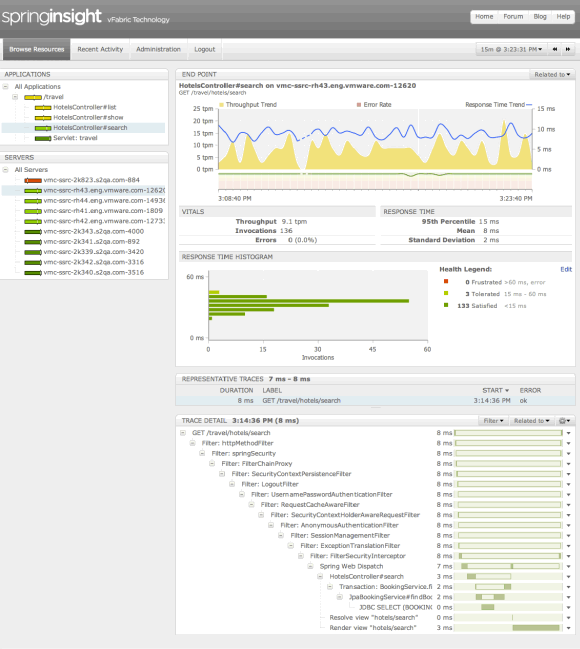With each passing day, the line between application development and IT operations gets more blurry.
Case in point is the release today of VMware vFabric 5, which beyond adding support for elastic memory usage for Java applications, is, according to David McJannet, director of product marketing for VMware, now being licensed on each instance of virtual machine rather than physical processor.
If you’re not familiar with VMware vFabric, it’s basically a combination of the Spring application development environment and the VMware vSphere virtualization management platform. It is primarily designed to give Java developers more control over virtualization resources, which serves to lessen the dependencies that developers have on the IT operations team.
The whole ‘DevOps’ arena is in a state of flux at the moment because as developers embrace new agile development methodologies, the internal IT operations team can’t keep pace. The VMware approach to that problem is to simply give developers more control over virtual machine resources, which essentially puts the tactical management of IT operations into the hands of the developers. IT operations people will probably still manage the physical server, but as far as what happens in terms of portioning those servers into virtual resources for developers, the application development team can handle that by invoking VMware vFabric, especially now that licensing costs are tied to the virtual machine layer.
Many will argue about whether this is a good idea or not. Some will argue that developers have more important things to do, or that they are simply not responsible enough to handle management tasks. But the simple fact of the matter is that agile development methodologies are not going to go away. That leaves the IT operations team with one of two basic choices. They can rework the way IT operations works to accommodate agile development, or they can give the developers access to their own virtual management framework. In effect, the latter approach allows the IT operations people to get out of the way of the developers, while at the same time making the developers more responsible for maintaining their own environment.
If that sounds a lot like the digital equivalent of telling developers that the time has come to clean up their IT operations mess, then so be it. After all, there is no shortage of trouble to be found managing production systems. By giving developers more control over their own virtual server playpens, the IT operations people get to concentrate on optimizing production environments that are getting more complex with each passing day. Besides, there’s usually no love lost between developers and the IT operations team anyway.
There is, of course, no doubt that the development team will eventually miss the IT operations folks, but initially most of them will think they’ve just been handed the keys to the kingdom without realizing how much actual effort goes into keeping the kingdom running.



